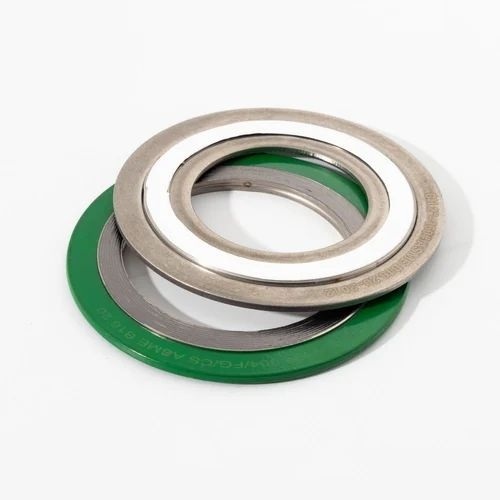In the world of industrial sealing, where high performance, reliability, and durability are paramount, stainless steel spiral wound gaskets stand out as a superior choice. These engineered sealing solutions are designed to withstand extreme pressures, high temperatures, and corrosive media, making them indispensable across a wide range of critical applications. If you're searching for a robust and dependable gasket for your challenging environment, understanding the capabilities of stainless steel spiral wound gaskets is essential.
Why Choose Stainless Steel Spiral Wound Gaskets?
- Spiral wound gaskets are constructed with an alternating arrangement of pre-formed metallic winding strips and soft filler materials. This unique design provides exceptional resilience and recovery under fluctuating operating conditions, ensuring a leak-tight seal even with minor flange imperfections or thermal cycling. When the metallic component is stainless steel, this inherent strength is further elevated, offering a multitude of benefits:
- Corrosion Resistance: Stainless steel's inherent resistance to oxidation and various corrosive agents makes these gaskets ideal for chemical processing, oil and gas, and marine environments where exposure to aggressive substances is common.
- High Temperature Performance: Stainless steel maintains its structural integrity and sealing effectiveness at elevated temperatures, crucial for applications in power generation, refineries, and petrochemical industries.
- High Pressure Capability: The robust construction of spiral wound gaskets, particularly with stainless steel windings, allows them to handle high internal pressures with remarkable stability.
- Excellent Resilience & Recovery: The spiral design provides a spring-like action, enabling the gasket to adapt to minor flange separation or vibration, thereby maintaining a consistent seal.
- Versatility: With various stainless steel grades and filler materials available, these gaskets can be tailored to meet specific application requirements.
Understanding the Construction of Stainless Steel Spiral Wound Gaskets
A typical spiral wound gasket consists of three primary components:
- Metallic Winding Strip: This is the core of the gasket's strength and resilience. For stainless steel spiral wound gaskets, the winding material is precisely formed stainless steel.
- Filler Material: Interwoven with the metallic strip, the filler material provides the primary sealing element. The choice of filler depends heavily on the application's temperature, pressure, and media compatibility.
- Inner and Outer Rings (Optional but Recommended): These rings provide additional stability and compression control. The inner ring prevents radial inward buckling of the windings, especially in vacuum or high-pressure applications. The outer ring (or guiding ring) acts as a compression limiter, preventing over-compression of the gasket and aiding in proper alignment during installation. Both rings can also be made from various grades of stainless steel.
Materials & Grades for Stainless Steel Spiral Wound Gaskets
The versatility of stainless steel spiral wound gaskets is greatly enhanced by the wide array of stainless steel grades available for the winding strips and rings, as well as the diverse range of filler materials. Selecting the right combination is critical for optimal performance.
Stainless Steel Grades (for Winding & Rings):
- Stainless Steel 304 (SS304 / UNS S30400): A common general-purpose austenitic stainless steel, offering good corrosion resistance and ductility. Suitable for a broad range of applications.
- Stainless Steel 304L (SS304L / UNS S30403): The low-carbon version of 304, providing improved weldability and resistance to intergranular corrosion, particularly useful after welding.
- Stainless Steel 316 (SS316 / UNS S31600): An austenitic stainless steel with added molybdenum, significantly enhancing its corrosion resistance, especially against pitting and crevice corrosion in chloride environments. Ideal for marine and chemical applications.
- Stainless Steel 316L (SS316L / UNS S31603): The low-carbon version of 316, offering the same enhanced corrosion resistance as 316 with improved weldability and resistance to sensitization.
- Stainless Steel 321 (SS321 / UNS S32100): A titanium-stabilized austenitic stainless steel, offering excellent resistance to intergranular corrosion at elevated temperatures, making it suitable for high-temperature applications.
- Stainless Steel 347 (SS347 / UNS S34700): A niobium/columbium-stabilized austenitic stainless steel, similar to 321 in its high-temperature intergranular corrosion resistance.
- Duplex Stainless Steel (e.g., Duplex 2205 / UNS S32205, Super Duplex 2507 / UNS S32750): These offer higher strength and superior resistance to pitting, crevice corrosion, and stress corrosion cracking compared to austenitic stainless steels. Ideal for highly corrosive and demanding environments.
- Nickel Alloys: While not strictly "stainless steel," many specialized applications require nickel alloys for extreme corrosion or temperature resistance. These can also be used as winding materials in spiral wound gaskets and include:
- Monel 400 (UNS N04400): Excellent resistance to seawater, hydrofluoric acid, and other corrosive media.
- Inconel 600 (UNS N06600): High-temperature strength and oxidation resistance.
- Inconel 625 (UNS N06625): Exceptional strength and corrosion resistance across a wide temperature range.
- Hastelloy C-276 (UNS N10276): Outstanding resistance to a wide range of severe chemical environments.
- Titanium (Grade 2, Grade 12): Excellent corrosion resistance, especially in oxidizing acids and chloride solutions.
Applications of Stainless Steel Spiral Wound Gaskets
The robust nature and adaptable design of stainless steel spiral wound gaskets make them suitable for a vast array of industries and applications, including:
- Oil & Gas: Refineries, pipelines, offshore platforms, petrochemical plants.
- Chemical Processing: Acid lines, reactors, heat exchangers handling corrosive chemicals.
- Power Generation: Steam lines, turbines, boiler applications in thermal and nuclear power plants.
- Marine Industry: Seawater systems, shipbuilding, offshore drilling.
- Pulp & Paper: Chemical recovery systems, process lines.
- Food & Beverage: Though less common than sanitary gaskets, spiral wounds might be used in utility lines.
- General Industry: HVAC, water treatment, and various industrial piping systems requiring reliable sealing.
